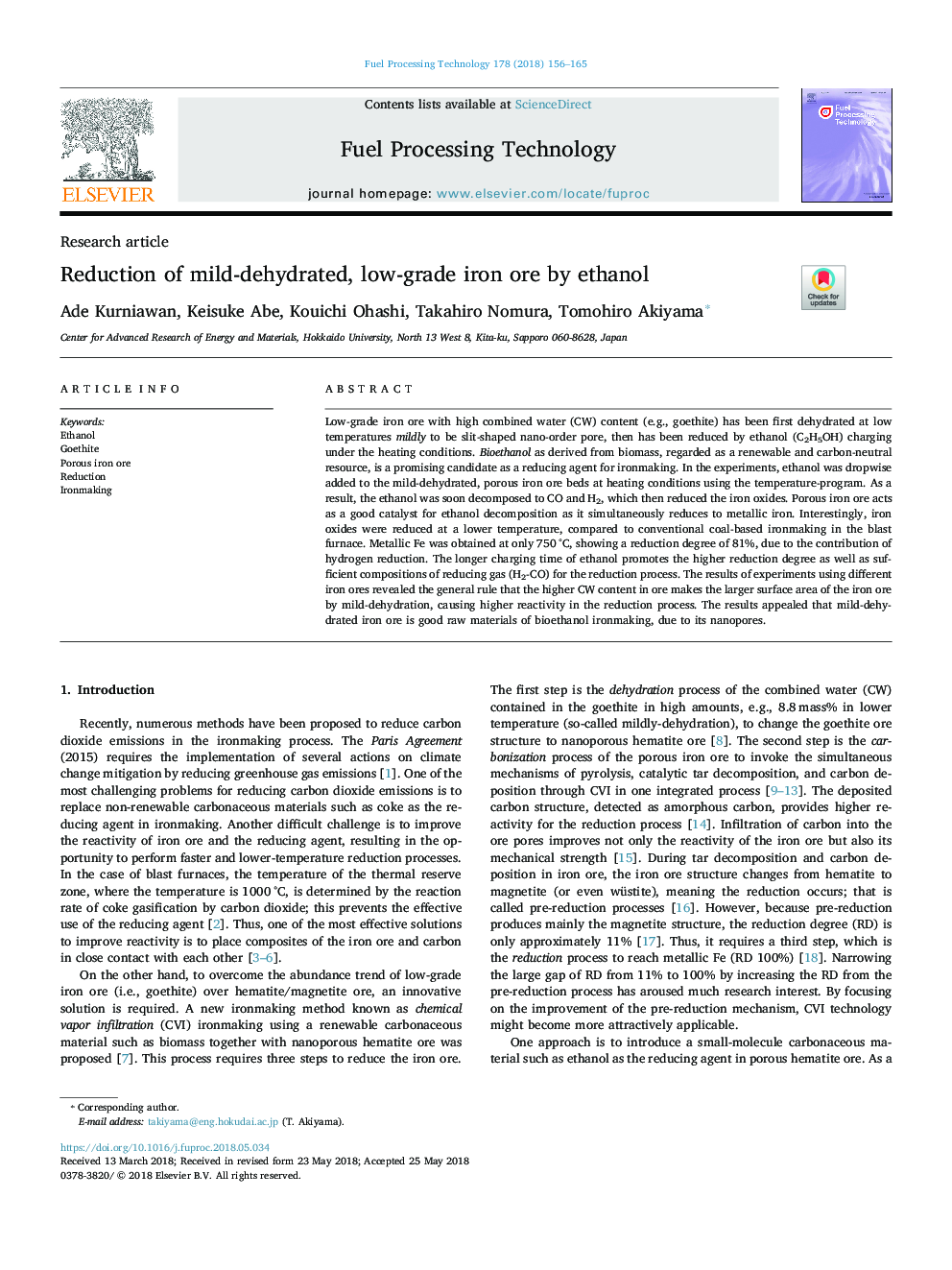| Article ID | Journal | Published Year | Pages | File Type |
|---|---|---|---|---|
| 6656284 | Fuel Processing Technology | 2018 | 10 Pages |
Abstract
Low-grade iron ore with high combined water (CW) content (e.g., goethite) has been first dehydrated at low temperatures mildly to be slit-shaped nano-order pore, then has been reduced by ethanol (C2H5OH) charging under the heating conditions. Bioethanol as derived from biomass, regarded as a renewable and carbon-neutral resource, is a promising candidate as a reducing agent for ironmaking. In the experiments, ethanol was dropwise added to the mild-dehydrated, porous iron ore beds at heating conditions using the temperature-program. As a result, the ethanol was soon decomposed to CO and H2, which then reduced the iron oxides. Porous iron ore acts as a good catalyst for ethanol decomposition as it simultaneously reduces to metallic iron. Interestingly, iron oxides were reduced at a lower temperature, compared to conventional coal-based ironmaking in the blast furnace. Metallic Fe was obtained at only 750â¯Â°C, showing a reduction degree of 81%, due to the contribution of hydrogen reduction. The longer charging time of ethanol promotes the higher reduction degree as well as sufficient compositions of reducing gas (H2-CO) for the reduction process. The results of experiments using different iron ores revealed the general rule that the higher CW content in ore makes the larger surface area of the iron ore by mild-dehydration, causing higher reactivity in the reduction process. The results appealed that mild-dehydrated iron ore is good raw materials of bioethanol ironmaking, due to its nanopores.
Keywords
Related Topics
Physical Sciences and Engineering
Chemical Engineering
Chemical Engineering (General)
Authors
Ade Kurniawan, Keisuke Abe, Kouichi Ohashi, Takahiro Nomura, Tomohiro Akiyama,
